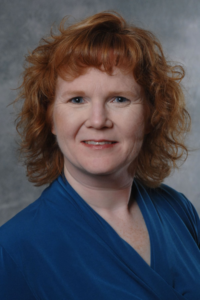FDAAA February “Spotlight” Feature: Sarah Pope Miksinski, Ph.D

Greetings to all. For those who do not know me, I currently work as a Senior Director in AstraZeneca in Chemistry, Manufacturing and Controls (CMC) Regulatory Affairs. There is a long list of technical duties that I am responsible for, including leading a global team that supports the AstraZeneca portfolio. However, I like to tell people that I really do the same thing that I did at FDA, just from a different perspective. I have been in industry for about four years.
I spent nearly 16 years at FDA, having landed in a CMC reviewer position right after my postdoctoral fellowship ended in 2002. During my tenure with the Agency, I held several positions ranging from CMC reviewer to Office Director. I vastly enjoyed every one of those positions, for many different reasons.
One of the questions I receive the most in industry is: “What was it like working for FDA?” I can easily remember the challenges with recruiting and hiring staff, the budget constraints, and the unending barrage of resource demands and justifications. However, I also remember my incredible colleagues and the sheer creativity present in that space where resources are constrained and yet, a lot of work has to be completed on behalf of patients.
One of my most vivid memories from my FDA days was a request that came to me right as I was stepping into a new position as an acting Office Director. It was around 2014, and the request was one of the biggest honors of my career to date. I was asked to use that senior position to really drive CMC assessment in a more patient centric direction. I was, by all accounts, an inexperienced senior manager…and I received that feedback, often very abruptly, from those who envisioned themselves in that position instead of me. During that very challenging time, I remember brainstorming in my office with a very junior person in the office I worked in (the Office of New Drug Products), and together, we hatched an idea to reinforce that necessary link to the patient.
We came up with a very grass roots plan – to install a bulletin board in the office corridor of Building 75. The bulletin board would be called “The Link to the Patient”, and all staff would be invited to add any meaningful contributions. In the days, weeks, and months that followed, I saw pictures, poetry, post-its with specific names, art created by pediatric patients, and news clippings added to that bulletin board, as provided by numerous employees both within and outside of our immediate office. It was just inspiring to see so much passion behind that concrete connection to the patient.
Now, as I work in industry, I recall that bulletin board every day. For me, it is a reminder that no matter what we are doing in pharmaceuticals – regulator, industry academia, etc. – we are all doing our best to serve patients. That is our common thread, and it is why I remain committed to supporting FDA in any way that I can.
My role in FDAAA is that of Secretary on the Executive Committee, and I hold a Board position as well. Those who know me may remember that administrative duties were never my forte, which is the exact reason I volunteered as Secretary. Both roles allow me to further develop in my own competencies, as well as support the FDA and its very talented staff. For me, that is such a huge honor, and I remain grateful to the Agency for its work, commitment and inspiration.
